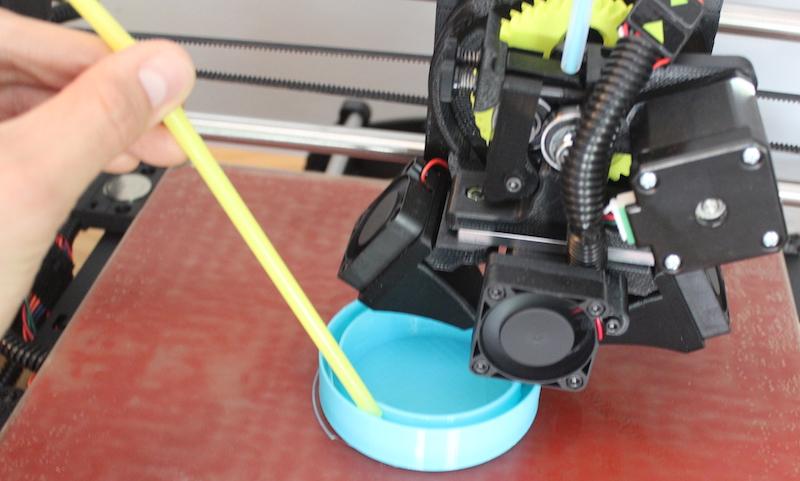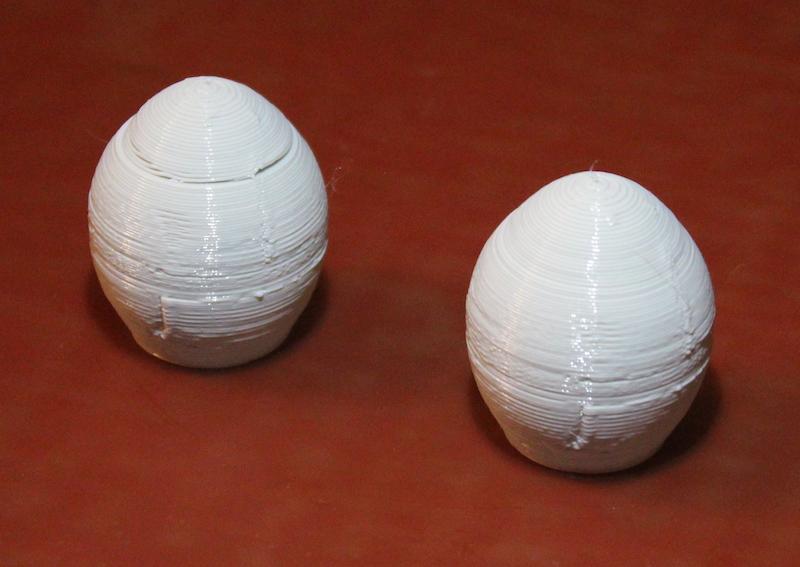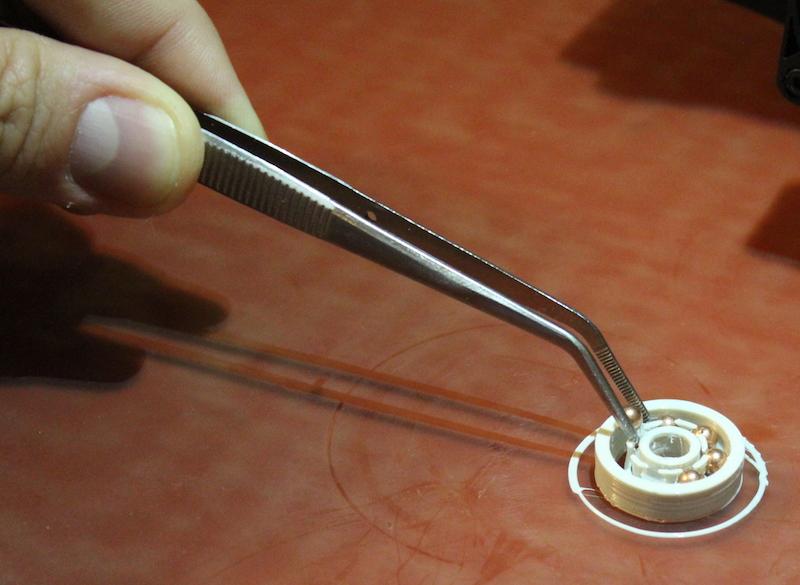 The team at Makefast Workshop is made up of the dynamic and brilliant Maura Atwater and Adam Kumpf, who bill themselves as Navigator and Melder, respectively. With their impressive resumes, enthusiastic engagement, and willingness to share, I couldn’t help but be intrigued by their latest foray into material mixing in 3D printing. Rather than thinking about ways that parts printed from different materials could be combined after printing, they examined the possibilities for intervening in the printing process while it is occurring to mix and change materials. What piqued their curiosity was a series of questions:
The team at Makefast Workshop is made up of the dynamic and brilliant Maura Atwater and Adam Kumpf, who bill themselves as Navigator and Melder, respectively. With their impressive resumes, enthusiastic engagement, and willingness to share, I couldn’t help but be intrigued by their latest foray into material mixing in 3D printing. Rather than thinking about ways that parts printed from different materials could be combined after printing, they examined the possibilities for intervening in the printing process while it is occurring to mix and change materials. What piqued their curiosity was a series of questions:
“[T]he componentized way of combining materials is just one way to create hybrid parts. What about parts that want to be fully encapsulated so they can’t come apart? How about adding materials that aren’t rigid, like sand or water? Or perhaps parts that are constrained by each other, but not firmly connected?”
They quickly recognized that one of the advantages of working with the type of open bed printer most commonly used by makers is that the print is available for tinkering while it is being created. So they set out to perform, and share, some experiments and what they learned when intervening in a print to fill the object with a liquid, metal, or sand.
 Their first project was to create a can chiller that could have a liquid filling between a double walled outer layer. The design itself was downloaded from Thingiverse, and the liquid filling was made by mixing up a batch of highly salted water, necessary so that the water wouldn’t freeze, thereby expanding and cracking the walls of the print. The way to get the water between the walls of the print was to pause the print at a certain height, before the top of the walls were sealed and use a squirt bottle to pour the liquid between them, then restart the print to finish it off.
Their first project was to create a can chiller that could have a liquid filling between a double walled outer layer. The design itself was downloaded from Thingiverse, and the liquid filling was made by mixing up a batch of highly salted water, necessary so that the water wouldn’t freeze, thereby expanding and cracking the walls of the print. The way to get the water between the walls of the print was to pause the print at a certain height, before the top of the walls were sealed and use a squirt bottle to pour the liquid between them, then restart the print to finish it off.
 The second print intervention involved putting sand into a printed egg to make a maraca, but doing it in such a way that the egg would be completely sealed upon completion. They discovered that by pre-heating the sand to the temperature of the print bed, the cooling it would cause in the paused print when poured in could be minimized, creating a seamless print.
The second print intervention involved putting sand into a printed egg to make a maraca, but doing it in such a way that the egg would be completely sealed upon completion. They discovered that by pre-heating the sand to the temperature of the print bed, the cooling it would cause in the paused print when poured in could be minimized, creating a seamless print.
Their third, and final, project was the creation of a set of ball bearings by printing the bearing, pausing the print, and then inserting BBs for the creation of smooth rotation. This project had the most difficult workaround of all three. Instead of pausing the print in order to place the BBs, something which was causing the layers’ bond to weaken, they suggest inserting the BBs while the print is running but at a greatly reduced speed – obviously, not something you want to try after having too much espresso.
For a detailed summary of what was learned during the experiments, check out their blog posting and, in the spirit of open source, share your own experiences! Discuss further over in the MakeFast Workshop 3D Printing Hacks forum at 3DPB.com.
Subscribe to Our Email Newsletter
Stay up-to-date on all the latest news from the 3D printing industry and receive information and offers from third party vendors.
You May Also Like
US Army Corps of Engineers Taps Lincoln Electric & Eaton for Largest 3D Printed US Civil Works Part
The Soo Locks sit on the US-Canadian border, enabling maritime travel between Lake Superior and Lake Huron, from which ships can reach the rest of the Great Lakes. Crafts carrying...
Construction 3D Printing CEO Reflects on Being Female in Construction
Natalie Wadley, CEO of ChangeMaker3D, could hear the words of her daughter sitting next to her resounding in her head. “Mum, MUM, you’ve won!” Wadley had just won the prestigious...
Blue Laser-powered M600 3D Printer Launched by Meltio
Founded in 2019 as a joint venture between Additec and Sicnova, metal 3D printer OEM Meltio develops and manufactures high-performance and easy-to-use metal 3D printing solutions that use its patented wire-laser metal...
3D Printed Storage Tanks Cut Material Costs by 25%
In a previous article, “Concrete Dreams: Let’s Print Money, Not Houses,” we discussed how the spotlight on 3D printing homes might be misplaced. Bollards, pedestrian bridges, and concrete tanks could...





























